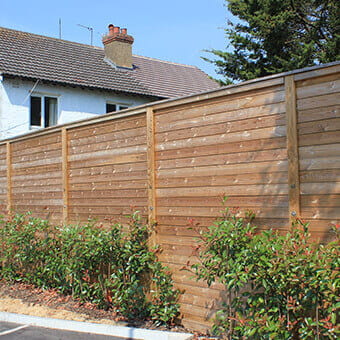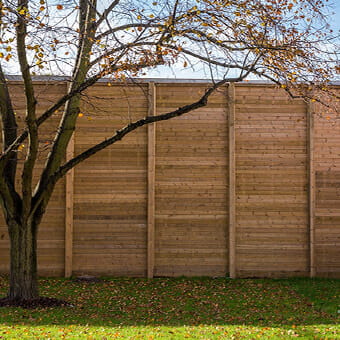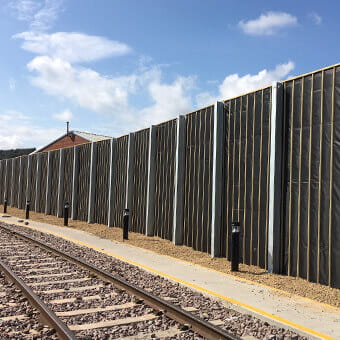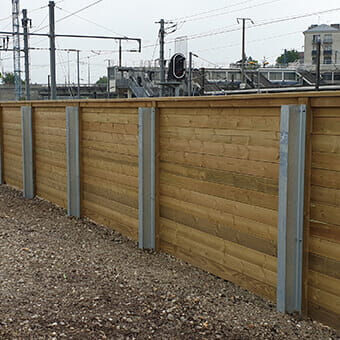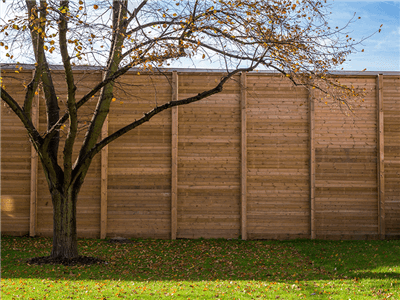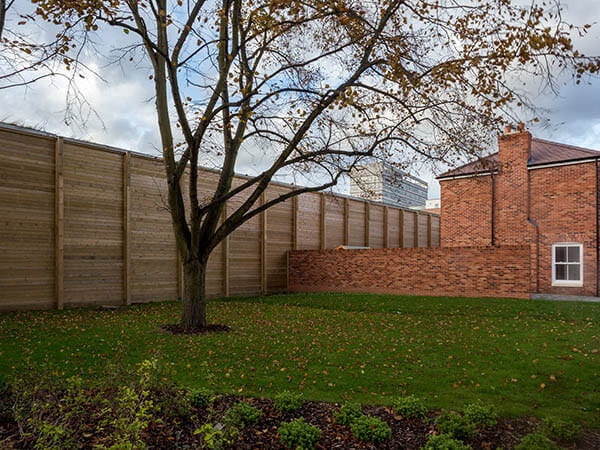Our other sites:
Sound barriers, also known as noise barriers or acoustic barriers, are structures designed to reduce or block the transmission of sound from one area to another. Sound barriers are commonly used within a wide range of sectors to reduce noise from roads and railways, schools and commercial properties, and also within domestic settings including around individual gardens. The growing density of urban areas has directed affected the demand for sound barriers, with architects and specifiers writing them into most development plans.
According to the World Health Organisation (WHO), outdoor sound levels during the day should be around 50dBA to prevent people from becoming ‘moderately annoyed’, while a noise level under 30dBA is recommended during the night for undisturbed sleep. However, most day-to-day noise, for example a motorcycle or a pneumatic drill, exceed the WHO’s recommendations.
What are sound barriers?
Sound barriers differ from normal fencing as they must be specifically constructed and positioned – ideally with the help of an acoustic engineer – to enable effective noise reduction. To perform efficiently, their material is important; sound barriers are often made from materials like concrete, steel, and timber, with absorptive versions incorporating specialist acoustic materials that absorb sound waves. Sound barriers either reflect or absorb sound waves, reducing the noise that reaches the protected side. The effectiveness of a sound barrier depends on its height, length, and proximity to the noise source, which is all determined by a noise consultation. Alongside road infrastructure, by law, sound barriers must be UKCA marked as a complete system as this means it has been assessed against wind loading and vibrations. An acoustic barrier falling into a road would be catastrophic.

How do sound barriers work?
Sound barriers minimise noise by creating a barrier of sufficient mass, height and density to disrupt and deflect the sound as it travels. While acoustic barriers can’t completely cancel out noise, in the ‘Shadow Zone’ - where the noise-cancelling is most effective - they can drastically reduce noise, creating a more peaceful environment, minimising disruption and, in some cases, raising property values.
What are the benefits of acoustic barriers?
Depending on the style, model and materials used, acoustic barriers can have a range of benefits.
Jacksons designs and manufactures a range of acoustic barriers including Jakoustic® Reflective, which uses heavy section-planed timber "V" boards to reflect noise, and Jakoustic® Absorptive, which carries the same design but additionally has Rockwool fibre and a protective membrane on one side to offer improved soundproofing in confined areas. Like all of our Jakcure-treated timber fencing and steel fencing, our sound barriers come with a 25-year guarantee and we’ll work with you to deliver advice, guidance and expertise at every stage.


Find out more about our Jakoustic® sound barriers and see our complete range of acoustic fencing solutions. To learn more about managing noise pollution and acoustic fencing, download our e-guide and factsheet here.
Related
Related products
Jacksons Security has a range of products relating to this article, all complete with our 25 year service life guarantee. If you cannot find the item you are looking for, please do not hesitate to call our friendly sales team.
Related Content
Top
